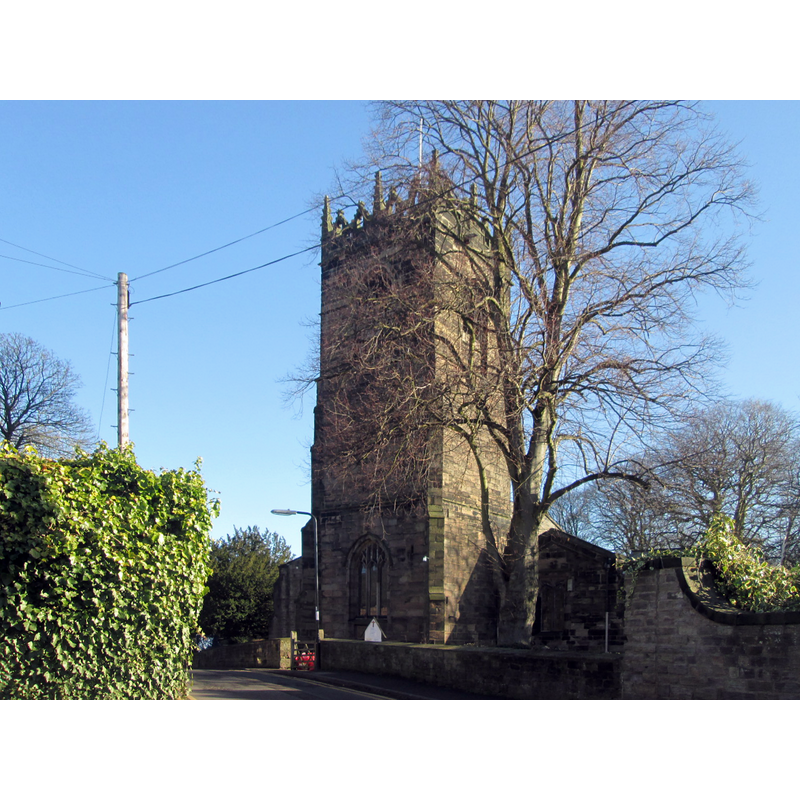Aston nr. Rotherham / Aston-cum-Aughton / Estone / Hactone

Image copyright © John Slater, 2015
CC-BY-SA-2.0
Results: 6 records
design element - motifs - floral
Scene Description: on the chamferred sides of the underbowl
Copyright Statement: Image copyright © Heritage Inspired, 2002
Image Source: digital photograph [edited] taken 12 July 2002 by Heritage Inspired [www.flickr.com/photos/34354594@N05/4365439154] [accessed 25 September 2018]
Copyright Instructions: PERMISSION NOT AVAILABLE -- IMAGE NOT FOR PUBLIC USE
design element - motifs - moulding
human figure - male - bearded - warior - with spear and sword
Scene Description: a rare scene of unknown meaning? some sources refer to it as Herod in the Massacre of the Innocent [cf. FontNotes]
Copyright Statement: Image copyright © Pevsner, 1967
Image Source: B&W photograph in Pevsner (1985 c1967)
Copyright Instructions: PERMISSION NOT AVAILABLE -- IMAGE NOT FOR PUBLIC USE
view of base - detail
Scene Description: Source caption: "The font dates from about 1400. It has a wonderful carved figure at the base, thought to represent King Herod holding a dagger."
Copyright Statement: Image copyright © Heritage Inspired, 2002
Image Source: digital photograph [edited] taken 12 July 2002 by Heritage Inspired [www.flickr.com/photos/34354594@N05/4365439154] [accessed 25 September 2018]
Copyright Instructions: PERMISSION NOT AVAILABLE -- IMAGE NOT FOR PUBLIC USE
INFORMATION
FontID: 02000AST
Object Type: Baptismal Font1
Church/Chapel: Parish Church of All Saints
Church Patron Saints: All Saints
Church Location: 40 Worksop Rd, Aston, Sheffield S26 2EE, UK
Country Name: England
Location: South Yorkshire, Yorkshire and the Humber
Directions to Site: Located just NW of the A57-M1 crossroads, to the SE of Sheffield
Ecclesiastic Region: Diocese of Sheffield
Historical Region: Hundred of Strafforth -- formerly WRYrks
Font Location in Church: Inside the church [cf. FontNotes]
Date: ca. 1400?
Century and Period: 14th - 15th century, Early Perpendicular
Cognate Fonts: The font at Laughton-en-la-Morthen
Font Notes:
Click to view
There are two entries for this Aston [variant spelling] in the Domesday survey [http://opendomesday.org/place/SK4685/aston/] [accessed 25 September 2018] one of which, in the lordship of Leofsi in 1066, reports a priest and a church in it. An early recorded mention of the font here appeared in an article entitled "A walk to Aston", published in The Northern Star or Yorkshire Magazine (issue no. 19, December 1818): "The font appears antique, and its cavity sufficiently capacious for the purpose of immersion in baptism." The font here is noted in Glynne's visit of 13 April 1860 (in Butler, 2007): "The font is a very fine one, of Perpendicular character; the bowl octagonal, has a battlement along the top, and is panelled with quatrefoils and wavy wheels. At the base is the figure of a king sitiing with spear in his hand, and on the opposite corner an angel; said to be Herod lying in wait for our Saviour, and an angel watching." Noted in Armitage (1905). Described in Cox & Harvey (1907) as an exceptionally fine example of 15th cent. font; panels have quatrefoils alternating with wavy wheels or roundels; at the base a figure of a seated king holding a spear; on the opposite side, an angel. Noted in Mee (1941): "a finr 15th century font remarkable for two quaint carvings at the base --a fierce-looking man with a spear and an angel with a scroll. It has been thought to represent Herod lurking in readiness to kill the Child of Bethlehem." Described and illustrated in Pevsner (1986 c1967): "Font. Early Perp[endicular], with tracery motifs and battlements. Against the foot the unexpected seated figure of a little man with a sword. What is its meaning?" An added footnote in Pevsner (Ibid.) reads: "The Rev. G. Kirk suggests that the figure may be connected with the slaying of the Holy Innocents." The entry for this church in Historic England [IoE Number: 335876] reads: " Font[s] late C14; with part of base cut away and with reclining man carved at the foot (Pevsner, plate 29), castellated top with tracery motifs". The entry for this church in All Saints Aston-cum-Aughton [http://allsaintsaston.com/?page_id=29] [accessed 25 September 2018] notes: "The font dates from about 1400. It was moved from under the tower to its present location in 1957. The carved figures on the base are thought to represent King Herod, intent on killing the baby Jesus and a guardian angel warning Joseph to flee with the Holy Infant to Egypt." The font is also described in Mary E, Layne's The Story of the Church of All Saints, Aston, in the Diocese of Sheffield (1950), newly edited by P. Newbold in 2001 [www.j31.co.uk/astonchurhistbook.htm] [accessed 25 September 2018]: "an old Perpendicular octagonal font bearing on its base the figure of King Herod, spear in hand, lying in wait for the Infant Christ. On the opposite side is a watching angel." [NB: the lower half of the font has been 'trimmed off" drastically, losing thereby whatever was to the right of the armed figure].
COORDINATES
Church Latitude & Longitude Decimal: 53.362, -1.2981
Church Latitude & Longitude DMS: 53° 21′ 43.2″ N, 1° 17′ 53.16″ W
UTM: 30U 613253 5913891
MEDIUM AND MEASUREMENTS
Material: stone, type unknown
Font Shape: octagonal (mounted)
Basin Interior Shape: round
Basin Exterior Shape: octagonal
REFERENCES
Armitage, Ella S., A key to English antiquities with special reference to the Sheffield and Rotherham disctrict, London: J.M. Dent & Co., 1905
Cox, John Charles, English Church Furniture, New York: E.P. Dutton & Co., 1907
Glynne, Stephen Richard, The Yorkshire notes of Sir Stephen Glynne (1825-1874), Woodbridge: The Boydell Press; Yorkshire Archaeological Society, 2007
Mee, Arthur, The King's England, Yorkshire, West Riding, London: Hodder & Stoughton, 1941
Morris, Joseph Ernest, The West Riding of Yorkshire, London: Methuen & Co., 1932
Pevsner, Nikolaus, Yorkshire: the West Riding, Harmondsworth: Penguin Books, 1986 c1967


